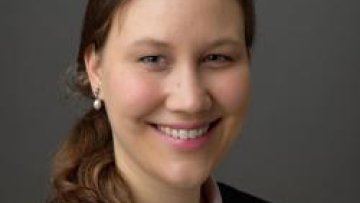The formation of three-grain junctions during solidification. Part II: theory
Fowler, A
Holness, M
Contributions to Mineralogy and Petrology
volume 177
issue 6
(07 Jun 2022)
A note on the rational homological dimension of lattices in positive characteristic
Hughes, S
GLASGOW MATHEMATICAL JOURNAL
(10 Jun 2022)
http://gateway.webofknowledge.com/gateway/Gateway.cgi?GWVersion=2&SrcApp=PARTNER_APP&SrcAuth=LinksAMR&KeyUT=WOS:000809268700001&DestLinkType=FullRecord&DestApp=ALL_WOS&UsrCustomerID=4fd6f7d59a501f9b8bac2be37914c43e
Discrete curvature on graphs from the effective resistance
Devriendt, K
Lambiotte, R
Journal of Physics: Complexity
(24 May 2022)
Continuous Indexing of Fibrosis (CIF): Improving the Assessment and Classification of MPN Patients
Ryou, H
Sirinukunwattana, K
Aberdeen, A
Grindstaff, G
Stolz, B
Byrne, H
Harrington, H
Sousos, N
Godfrey, A
Harrison, C
Psaila, B
Mead, A
Rees, G
Turner, G
Rittscher, J
Royston, D
(2022)
Global form of flavor symmetry groups in 4d N=2 theories of class S
Bhardwaj, L
SciPost Physics
volume 12
issue 6
183
(07 Jun 2022)
2-Group symmetries in class S
Bhardwaj, L
SciPost Physics
volume 12
issue 5
152
(09 May 2022)
A positivity-preserving scheme for fluctuating hydrodynamics
Magaletti, F
Gallo, M
Perez, S
Carrillo de la Plata, J
Kalliadasis, S
Journal of Computational Physics
volume 463
(26 Apr 2022)
Cervical lymph nodes and ovarian teratomas as germinal centres in NMDA receptor-antibody encephalitis
Al-Diwani, A
Theorell, J
Damato, V
Bull, J
McGlashan, N
Green, E
Kienzler, A
Harrison, R
Hassanali, T
Campo, L
Browne, M
Easton, A
Soleymani Majd, H
Tenaka, K
Iorio, R
Dale, R
Harrison, P
Geddes, J
Quested, D
Sharp, D
Lee, S
Nauen, D
Makuch, M
Lennox, B
Fowler, D
Sheerin, F
Waters, P
Leite, M
Handel, A
Irani, S
Brain
volume 145
issue 8
2742-2754
(24 Mar 2022)
Topological data analysis enables deep quantification of vascular responses to drug and radiation treatment in 3D tumours. Oxford Mathematician Bernadette Stolz explains.
Anomalies of Generalized Symmetries from Solitonic Defects
Bhardwaj, L
Bullimore, M
Ferrari, A
Schafer-Nameki, S
(30 May 2022)


